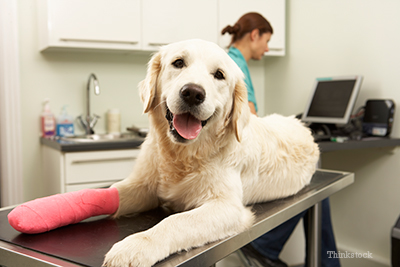
Dr. Phil Zeltzman is a traveling, board-certified surgeon in Allentown, PA. His website is www.DrPhilZeltzman.com. He is the co-author of “Walk a Hound, Lose a Pound” (www.WalkaHound.com).
AJ Debiasse, a technician in Stroudsburg, PA, contributed to this article.
The level of medical and surgical care we can provide pets is exceptional. In many cases, it is as advanced as the care provided to humans. Cataract surgery, total hip replacement and MRIs are performed by specialists routinely. We can safely anesthetize extremely sick pets, reconstruct shattered bones and perform root canals. We can control complicated hormonal diseases, use radiation therapy/chemotherapy to fight cancer and change the behavior of the most aggressive pets. Yet our limits are constantly pushed by medical progress and loving pet owners. Hardly a week goes by without the announcement of a novel drug, a new surgery or an improved protocol. Here’s a list of just a few veterinary industry advancements that excite me the most:  Dialysis
Dialysis
Cats and dogs with kidney failure can benefit from dialysis, just like humans. A sophisticated machine literally filters the blood and removes toxins. In some cases, this is a temporary treatment until a kidney transplant can be performed.
Titanium prosthetics
Although pets typically do very well after amputation, some surgeons try to save the leg in some specific cases. They use titanium prostheses that the bone actually grows into.
Titanium supported windpipes
Some small dogs struggle to breathe because of a collapsing trachea, where the windpipe becomes very narrow (especially during excitement). The newest advancement in this field is a tracheal stent, which is a sophisticated titanium device placed inside the windpipe.
Diet-based therapies
Pet food companies have a number of diets that can actually treat a disease or at least manage it, including arthritis, liver disease and skin allergies. One diet can be used to treat hyperthyroidism in cats, a disease where the thyroid becomes overactive, and several diets literally change the pet’s genes to help him lose weight or slow down cartilage damage.
Telemedicine
Thanks to sophisticated Internet connections, vets with the right equipment can now send X-ray, ultrasound, ECG or MRI studies to a specialist located several states away. This is called telemedicine, which allows obtaining a second opinion without the specialist being physically present. Within hours, a written report is sent back by the specialist.
Stem cell therapy
Stem cell therapy, even though it is in its infancy, might help patients with diseases as varied as arthritis, inflammatory bowel disease and ligament or tendon damage. Stem cells are isolated from a patient’s bone marrow or more commonly from fat, and later injected into the same patient, so there are no concerns about rejection.
Minimally invasive surgery
Minimally Invasive Surgery (MIS) encompasses a number of techniques where a tiny camera is introduced in a body cavity, most commonly the chest, the belly or a joint. In some specific cases, MIS allows getting tissue samples and removing body parts without performing classic surgery. Open surgery is still necessary in many cases, but MIS is a nice complement for some patients.
Currently, many of these advancements may come with the caveats of limited availability and may be financially constricting. However, history reassures us that over time, these procedures will become more widely performed and therefore, more affordable.
Until then, we can always stay excited for the next medical innovation.
If you have any questions or concerns, you should always visit or call your veterinarian -- they are your best resource to ensure the health and well-being of your pets.
